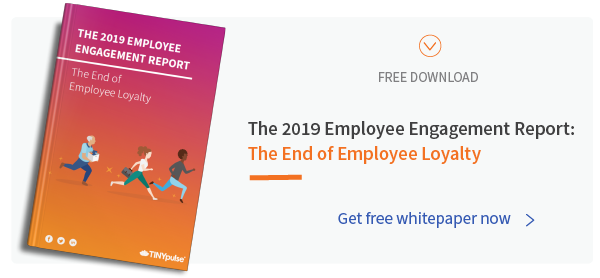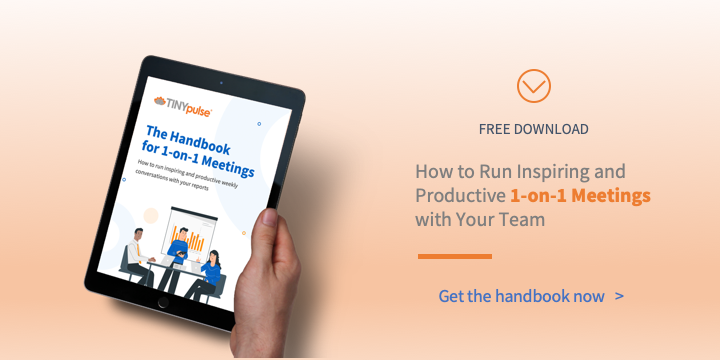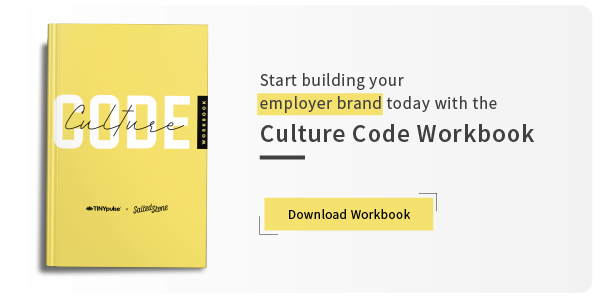47 Science-Backed Questions For Your Annual Employee Survey [Template]
Many of you ask for the best employee survey questions. Hundreds of companies pay us for them.
Most companies do some kind of quarterly or annual survey.
Here's the thing.
Leaders and HRs don't always know what to ask. Or they're not confident in their questions. Anyway here are the goods. We recently started doing full surveys. By popular demand. 47 questions. All backed by one of the world's leading organizational scientists.
From the time employee-attitude surveys emerged in the 1920s, surveys quickly became commonplace for most organizations.
Today, annual employee engagement surveys are many organizations’ choice for measuring engagement levels, organizational culture, and more.
But are they still the answer?
The problem with the traditional annual survey
Over the past several decades, the work environment has changed dramatically. In today’s fast-paced, technological world, we are accustomed to giving and receiving feedback instantly.
Relying on an employee engagement survey that comes once a year means waiting. That means the analytics we rely on to make strategic, informed decisions may no longer be relevant when you’re ready to take action.
We also don’t get enough information. With many traditional annual employee engagement surveys, the questions are too vague.
The surveys don’t dive deep enough into what’s driving engagement, productivity, and turnover. It doesn’t get to the why.
This is because most ask quantitative questions so we learn what our employees think, but not why they think that way.
READ MORE: 50 ESSENTIAL QUESTIONS YOU NEED TO ASK IN YOUR EMPLOYEE ENGAGEMENT SURVEY
So, is it time to move away from the annual survey once and for all?
Not quite. The annual employee engagement survey is still an important piece of our employee feedback strategy.
Why the annual employee survey is still relevant
According to a 2019 Gartner report, 74% of companies still use the formal, large-scale annual survey. Despite the problems with the annual employee survey, it is here to stay — and for good reason.
The annual survey allows you to collect valuable data and easily compare year-to-year results. This helps you monitor your progress toward meeting organizational goals while identifying development opportunities.
It also gives you a big-picture view of how well your organization is doing across the board. As a one-time event, you have the opportunity to promote it and encourage participation.
Pulse surveys, one-on-one meetings, and other feedback methods are an important part of a sound employee feedback plan, and so is the annual employee survey.
DOWNLOAD FREE EBOOK: THE ADVANCED GUIDE TO PULSING
When used in conjunction with other feedback mechanisms, the annual survey gives your employees a familiar avenue to voice their opinion.
Metrics your employee survey NEEDS to measure
Many of the challenges posed by the annual employee surveys can be solved by changing the metrics you are measuring. The goal is to get the right data by asking the right questions.
Measuring job embeddedness instead of employee satisfaction
Many times with employee surveys, the focus is on engagement and job satisfaction. But that’s only half of the equation.
We also need to measure job embeddedness to ensure we have the full picture.
Work-life balance is something we frequently hear about. But is it the answer?
In today’s modern workplace, work and life are no longer two separate things. Our jobs and personal lives connect in many ways.
This interrelationship is known as job embeddedness.
What is job embeddedness?
Job embeddedness is the measurement of how connected an employee is to their organization and the office community. It is influenced by community and organizational connections and it drives employee retention.
Connections that influence job embeddedness
Georgetown University’s Dr. Brooks Holtom and his colleagues identified three core elements of job embeddedness within an employee’s organization and community:
READ MORE: BETTER WAYS TO PREDICT WHO'S GOING TO QUIT (HARVARD BUSINESS REVIEW)
- Fit
- Links
- Sacrifice
|
Type of Connection |
Description |
Example |
|
Fit - organization |
How compatible an employee thinks they are with their organization’s culture and the job demands. |
High: An employee believes in the work they do. Low: An employee doesn’t feel recognized for good work. |
|
Fit - community |
How well an employee thinks they fit within their community and surrounding environment. |
High: An employee enjoys living near the office and walking to work. Low: An employee lives in a dangerous part of town to be close to the office. |
|
Links - organization |
How strong an employee’s formal and informal connections are with others at work. |
High: An employee has a close group of work friends and a good relationship with their manager. Low: An employee often feels excluded from projects and left out. |
|
Links- community |
How strong an employee’s formal and informal connections are with others in the community. |
High: An employee frequently attends a local book club and has a few close friends nearby. Low: An employee doesn’t have any nearby friends or family. |
|
Sacrifice - organization |
What an employee may lose (monetarily and psychologically) if they left their job. |
High: An employee would lose their great benefits package and reputation as the expert in their department. Low: An employee’s benefits are comparable with most organizations and they do not feel appreciated at work. |
|
Sacrifice - community |
How likely it would be that an employee would need to move or commute if they took a different job. |
High: An employee would need to relocate to switch jobs and their daughter would have to change school districts. Low: An employee commutes 120 minutes per day and there are closer opportunities. |
How to measure employee engagement?
Over the past decade, employee engagement has become somewhat of a buzzword. But it’s more than that.
The Society for Human Resource Management (SHRM) defines engaged employees as ones who:
- Feel satisfaction with their work.
- Take pride in their organization.
- Enjoy and believe in their work.
- Understand the link between their job and the organization’s mission.
- Feel valued by their employer.
- Fully commit to their employer and their role.
- Exert extra effort to contribute to business success.
Engaged employees are not only more productive (by as much as 22%). They are also less likely to leave your organization.
Disengaged employees, on the other hand, cost companies up to $550 billion every year. The problem is that only 32% of employees in the U.S. are engaged at work.
It’s no secret that employee engagement is important. But how do you actually measure employee engagement? And what actually drives employee engagement?
47 questions you need to ask in your annual employee survey
After years of research, Dr. Brooks Holtom identified seven factors that drive employee performance and retention. Employees with higher scores in each of these categories are more likely to be engaged, embedded in their job, and perform better.
These categories include:
- Fast start (successful onboarding)
- Growth and development
- Empowered work environment
- Effective management
- Inspirational leadership
- Collaborative culture
- Communication
When you use these categories on your annual employee engagement survey, you can get more insightful data. This will help you make better decisions to improve employee engagement and job embeddedness.
Employee survey questions about onboarding
On the scale of 1-5, how much do you agree with the following statement:
1. I know what I need to do to be successful in my job.
2. I was given access to the resources I need to succeed when I started here.
3. During onboarding, I was shown where to get the information I need to succeed at my job.
4. During the onboarding process, I was introduced to the key people who can help me excel.
5. During onboarding, my colleagues went out of their way to help me adjust to this organization.
Successful onboarding is key to engaging your employees from the get-go. Glassdoor research found that organizations with a strong onboarding process improve new hire retention by 82% and productivity by over 70%.
It’s your opportunity to give your employees the resources and skills they need to be successful in their new jobs.
READ MORE: 30 SURVEY QUESTIONS YOU SHOULD ASK YOUR NEW HIRE DURING EMPLOYEE ONBOARDING
Alas, 23% of new hires leave before their first anniversary. Don’t wait until an exit interview to get the information you need.
By asking your current employees about their onboarding experience, you can learn where you need to make adjustments and fill in the gaps.
Growth and development employee survey questions
On the scale of 1-5, how much do you agree with the following statement:
6. I have a clear career path with my company.
7. In my organization, managers mentor and coach those they lead.
8. I am satisfied with the ongoing training that I am receiving.
9. I feel like I have the opportunity to develop to my full potential at this company.
10. This organization invests in developing its people.
Offering growth and development opportunities shows you are invested in your employees’ careers and futures. Aside from salary, it’s the most important benefit your employees want.
Unfortunately, most employees aren’t getting the growth and development resources they want. In fact, TINYpulse research found that less than 30% of employees feel they have lots of growth opportunities at their organizations.
Asking your employees about their experience with the opportunities your organization offers can help you see where you can make investments to support your employees’ career development. This will help you build a company culture of learning.
Employee survey questions about empowerment
On the scale of 1-5, how much do you agree with the following statement:
11. This job fits my interests and abilities well.
12. Employees here are empowered to make improvements.
13. Employees at this organization are able to make many important decisions.
14. This organization views failure as an opportunity for learning and improvement.
15. Everyone at this organization has access to information and technology that enables them to do their job well.
An empowered work environment is one that allows employees the freedom to make decisions while providing resources to support them. Research shows that when employees are encouraged to use their strengths, engagement rises by 6%.
Empowering employees shows you trust and respect them. When you ask about empowerment, you can gain insights on leadership, management, and your organization’s culture, and make adjustments where needed.
Effective management sample employee survey questions
On the scale of 1-5, how much do you agree with the following statement:
16. Supervisors at this organization are very supportive.
17. This organization has clear goals that all of the employees understand.
18. My salary is fair for the work I do.
19. I am satisfied with the benefits I receive.
20. I receive regular feedback from my manager on my performance.
Effective management is about more than just your employees’ direct supervisor. It’s also about how well your leadership team is doing managing employees.
READ MORE: 14 EMPLOYEE SURVEY QUESTIONS TO EVALUATE MANAGEMENT EFFECTIVENESS
Both managers and leadership influence whether an employee is engaged and how connected they feel to your organization. Asking the hard questions will help you see what you’re doing well and where you have room for improvement.
Inspirational leadership sample survey questions
On the scale of 1-5, how much do you agree with the following statement:
21. I understand the vision and mission of our organization.
22. The organization has a clear ethical code that guides behavior.
23. I trust my manager to do the right thing.
24. Senior leadership at the organization inspires me to give my very best.
25. The leadership of this organization operates with high integrity.
Whether or not your employees share and relate to your mission has a direct impact on their engagement. Research by IBM found that 80% of employees were more engaged when their work aligned with their organization’s value and mission.
Organizational values are the essence of your company’s mission and vision. Surprisingly, 26% of employees report their organization doesn’t have core values.
Many organizations publish their values and mission statement. So, where’s the disconnect?
It may be whether those values influence decision making. The problem could also lie with your employees’ direct manager.
Asking how values and vision affect day-to-day work can help you better understand the situation.
Survey questions about collaborative company culture
On the scale of 1-5, how much do you agree with the following statement:
26. Coworkers in my workgroup value my input.
27. Cross-functional collaboration is a strength at this organization.
28. Cultural diversity is a strength at this organization.
29. When I do a good job, it is recognized by others.
30. My peers are very supportive.
A collaborative culture is inclusive and systemic. All voices are valued and employees feel welcomed to share their knowledge with their team members and feel appreciated for their contributions.
To get insight into how collaborative your company culture is, don’t just ask your employees whether they “feel” it is. Ask meaningful questions about the employee experience so you can understand the factors that influence your culture.
Employee survey questions about communication
On the scale of 1-5, how much do you agree with the following statement:
31. This organization provides adequate information about its policies, goals, and upcoming changes.
32. My supervisor regularly seeks my input and is open to new ideas.
33. I understand the long-term competitive strategy of this organization.
34. The leaders at this organization are transparent in their communications.
35. This organization manages its social media presence well.
Communication is the flow of information. When your organization has great internal communication, your employees better understand the decisions you make and are open to giving feedback.
TINYpulse found that manager transparency is the top factor of employee happiness. By surveying your employees about how effective your organization's communication is, you can see where you stand and improve your communications.
Employee survey questions about performance
On the scale of 1-5,
36. How would you rate your own job performance?
37. How would you rate your workgroup performance?
Even though we have key metrics and performance goals, it’s important to understand how our employees view their performance.
These simple questions will help you see how your employees feel about their work.
Employee survey questions to measure job embeddedness
On the scale of 1-5, how much do you agree with the following statement:
38. I fit well in this organization.
39. I work well with my coworkers.
40. I would sacrifice a lot if I left this job.
41. I fit well in the community where I live.
42. I have many family and friends in the community where I live.
43. Leaving the community where I live would be very hard.
Job embeddedness is influenced by a variety of factors. The six questions here will help you get an overall picture of how connected your employees are to your organization and their community as a whole.
Employee survey questions that predict attrition
On the scale of 1-5, how much do you agree with the following statement:
44. I will likely move to another organization in the next year.
45. If I look for another job as good as this one, I will find one pretty quickly.
Do you know how many of your employees are looking for a new job? It can be tough, but asking your employees’ about their plan and comparing the answers to other survey items will help you see why they may want to leave.
READ MORE: 14 SURPRISING STATS ON EMPLOYEE RETENTION
Survey questions to measure employee happiness
On the scale of 1-5,
46. How happy are you at work?
47. How happy are you outside of work? (optional)
Does employee happiness actually matter?
According to many sources, including entrepreneur Neil Patel, absolutely. He found that 36% of employees would actually give up $5,000/year if they could be happier at work.
Happy employees are more engaged and connected to their organization. By seeing how happy your employees are at work and home, you can better understand the factors influencing it — and take proactive steps to improve things.
Get better insight from your employee survey results
We gave the 47 question template a name -- PEAK assessment, which will be the only annual survey you’ll ever need — and it’s free for TINYpulse users.
The 47-question template came from a decade of academic research by Dr. Brooks Holtom from Georgetown University. It provides leaders like you with insights into performance, embeddedness, attrition, and key drivers for engagement.
“The best data science delivers simple insights to complex questions.”
— Dr. Brooks Holtom
You don’t have to ask hundreds of questions to get comprehensive survey results.
But don’t just take our word for it: Book a demo now to learn more.
Share this
You May Also Like
These Related Stories

Employee survey questions about benefits







.png?width=534&height=632&name=blog%20ad%20(1).png)
